Text
What is the difference between in-cell and on-cell LCD screen of mobile phone?
Compared with the original method of installing a touch panel on a liquid crystal panel, the research on integrating the touch panel function with the liquid crystal panel is becoming more and more popular. The integration of the touch panel and the liquid crystal panel includes the "In-cell" method and the "On-cell" method.
In-cell refers to the method of embedding touch panel functions into liquid crystal pixels. The integration of the touch panel and the liquid crystal panel includes the "In-cell" method and the "On-cell" method. On-cell refers to the method of embedding the touch panel function between the color filter substrate and the polarizing plate.
On Cell refers to the method of embedding the touch screen between the color filter substrate and the polarizer of the display screen. That is, the touch sensor is equipped on the liquid crystal panel, which is much less difficult than the In Cell technology.
Proposals for In-cell technology have been put forward before, but it is difficult to ensure the yield and display performance, so practical progress has not been made. The reason is that the touch sensor function needs to be embedded inside the pixels on the TFT array substrate. For this reason, a complicated semiconductor manufacturing process must be used, which becomes a stumbling block to improve yield.
With the appearance of On-cell technology, the integration of LCD and touch panel ushered in a turning point. Since only a simple transparent electrode pattern or the like needs to be formed between the color filter substrate and the polarizing plate, it is easy to ensure the yield. In addition, the area of the effective display area in the pixel does not decrease, and image quality degradation will hardly occur due to this.
If the integration of liquid crystal technologies such as the On-cell method are popularized, there is no need to use external touch panel components. Manufacturers of touch panels are likely to transform from the original external touch panel manufacturers to LCD panel and color filter manufacturers. The original supply chain for product manufacturers to purchase external components from touch panel manufacturers will also be completely changed.

0 notes
Text
KTBABA enters the African market
In recent years, with the introduction of the "One Belt, One Road" initiative, Chinese companies have ushered in a rare opportunity to "go abroad" for development. As a manufacturer with many years of offline experience in foreign trade, KTBABA has also ushered in a historic opportunity to realize global online transformation and enhance brand height.
Africa is currently undergoing rapid economic development and is also in a period of rapid social transformation and upgrading. People's demand for communication and access to information is increasing. Therefore, touch-screen smartphones have replaced the previous traditional mobile phones and become the mainstream of the mobile phone market. However, the prices of big-brand smartphones like Apple and Samsung are beyond expectations for the average African public. After all, in Africa, the income gap between a small number of elites and ordinary people is still very large. Chinese mobile phone manufacturers have seized this opportunity to create their civilian smartphones specifically for the African public. The screen may be a little smaller and the speed may be a little slower, but the basic functions of the smartphone are readily available. The lowest price is more than RMB 500; the high price is less than RMB 2,000. This price is acceptable to the African public.
Meet the preferences of African customers
Chinese mobile phone brands have successfully solved the problem of “difficult selfies” of African people. Using eyes and teeth to locate, replace the facial recognition system of ordinary smartphones, and strengthen exposure on this basis, successfully helping African consumers solve the self-portrait confusion caused by darker skin tone
In recent years, KTBAB has conducted in-depth analysis and research on the consumption level of African customers and the mobile phone market. The factory has also increased the use of LCD screens for the hot-selling mobile phone brands in Africa. On the other hand, KTBABA develops the African market through social media, cooperates with local e-commerce platforms, reached good cooperation with major wholesalers in Africa to increase the popularity of KTBABAB's own brand.
At present, Africa is undergoing a consumption upgrade from "functional phones" to "smartphones", and the market potential is still great. KTBABA will continue to study and figure out the real needs of local LCD distributors and provide them with the most suitable and cost-effective products. As a Chinese brand, KTBABA strives to achieve localization and localization. Only when it meets the needs of the local society can KTBABA Establish a solid foundation in emerging markets.
0 notes
Text
Why do high-end mobile phone manufacturers need Mini LED? Is OLED not easy to use?
The burn-in of the OLED screen is related to the usual frequency of use. The OLED screen has a short life span due to its properties. The burn-in is unavoidable for the OLED screen and can only be slowed down by daily use habits. The most direct manifestation of aging is screen burn-in, which refers to the phenomenon that the monitor displays a static image for a long time, leaving a residual image.
You can refer to this picture. The redder it means the longer the screen is on.

Experts in the industry pointed out that a well-known mobile phone brand released the latest models, and the new products in the third quarter of 2021 will adopt mini LED screens.
It is understood that compared to ordinary LCD screens, Mini LED screens have finer light control technology and can bring better quality, including darker blacks, brighter brightness, richer colors, and higher contrast, which help Professionals' demand for color display.
The next layout of mobile phone manufacturers is MINI LED instead of OLED. Is it because OLED is not easy to use? Because the former has many advantages of OLED, but it will not age like OLED.

OLED, the pain of life and cost
On our mobile phones, tablets, and notebooks, most of them currently use LCD and OLED display panels.
Because of the organic self-luminous characteristics, OLED has the advantages of brighter, higher contrast, thinner and flexible display than traditional LCD panels. Since it was carried by iPhone X in 2017, it has been popularized and adopted by a large number of mobile phone manufacturers.
The idea of "bringing better visual effects to users" is wonderful, but OLED essentially relies on the color light emitted by the organic compound coating between the positive and negative electrodes.
Its lifespan is less than half of that of LCD backlight LED lamp beads. If the OLED screen displays the same picture for a long time, it will cause this part of the pixels to deteriorate rapidly, which will affect the overall subsequent display effect and become the "burn-in" that OLED can never escape. problem.
Even so in mobile phones, it is even more difficult to use OLED panels on tablets and notebooks with longer replacement cycles.
Although manufacturers can use algorithms to change the display mode to extend the life of OLED panels, OLED burn-in still cannot be fundamentally solved.
In addition, the long-term yield problem of OLED also keeps the cost high, and manufacturers only dare to equip OLED panels for flagship products with high enough profits.
Therefore, what prevents the popularization of OLED in the commercial display field is the "burn-in (life)" and "cost" issues.
According to a report from TechInsights, a 256GB iPhone X has an OLED panel cost of US$77, accounting for 19.5% of the BOM cost of the whole machine. The larger iPhone XS Max panel also costs more than 18% of the BOM of the whole machine. It is equipped with OLED. The most expensive part of the panel iPhone.

The supply chain of OLED is scarce in the market, leading to high prices of OLED panels. Yes, high-end mobile phone manufacturers must look for a new generation of technology. At this time, Mini LED has become a new choice.
Imagine that if each color LED lamp bead is reduced to the size of the screen pixel, the arranged panel has the characteristics of pixel self-luminescence like OLED, the viewing angle is also 180°, the resolution is higher, and the power consumption is higher. Low, longer life, and will not burn the screen, why not do it?
However, the ideal state of the above-LED display is called Mirco LED, not Mini LED, or not all.
We can simply understand that the lamp beads of Mini LED are larger than Mirco LED, and the required light mixing distance is also larger.
Mini LED can be regarded as an intermediate product leading to Micro LED, and can also be regarded as an upgraded version of LCD technology. It has been very popular in the industry shortly. It can be said to be an excellent transition solution before Micro LED technology is mature and popular.
When the display technology develops to a certain level, it will surely drive the industry to popularize new visual standards. In this environment, visual art workers can freely display their creativity, and the general public can also embrace more realistic visual effects. This is also the true meaning of KTBABA's research and development.
0 notes
Text
It is said that OLED screens hurt the eyes, why do manufacturers still use them?
In recent years, some high-end brands have used OLED screens. With the continuous upgrading of technology, OLED screen technology has become more mature. Let’s take a look at why high-end mobile phones like to use OLED.

First of all, why do mobile phone manufacturers use OLED?
This is because OLED has low power consumption, high contrast, high response time, brilliant colors, good viewing effect, ultra-light and thin, and the most important factor is that it can be made into a curved or folded form, so under the vigorous promotion of Samsung, especially Apple After the use of OLED screens, it broke out completely. Now that Samsung is leading the OLED field, it is full of money, which can be described as scheming. Looking at the current mobile phone market, the flagship phones are almost all OLED screens, including forms such as four bends, punch holes, waterfalls, etc., not to mention folding machines that are in short supply in the market. These are all showing the advantages of OLEDs that can be used as curved screens. The incisive and vivid.
Next, does OLED hurt your eyes?
Everyone said that the OLED screen hurts the eyes because of the dimming method of the screen. Because the OLED screen is self-luminous, it uses the PWM dimming method (see the figure below), which means that the pixels are continuously switched on and off. Because this method will cause the so-called splash screen, there will be a saying that it hurts the eyes. If the frequency is fast enough, the human eye cannot distinguish it.

It is generally considered that the flicker frequency is higher than 1250Hz to be considered healthy, but the current frequency is not up to this standard, so it is best not to stare at the phone for a long time, especially in the dark environment, the screen flicker is lower and the damage to the eyes is more severe. Although there have been many improvement measures, including the improvement of dimming modes, they have not yet reached the above standards.
Therefore, as consumers, we have to relax a little while using mobile phones. Use your mobile phone in a planned way! Especially those who like to chase dramas and play games should pay more attention! After a long period, you can take a break and do eye exercises. In addition, the brightness of the mobile phone can be adjusted appropriately for different environments and scenes. Don't make your eyes look too hard. For example, you must adjust the corresponding brightness when using your mobile phone indoors and outdoors! Of course, most mobile phones can now be set to intelligently adjust the positive brightness!
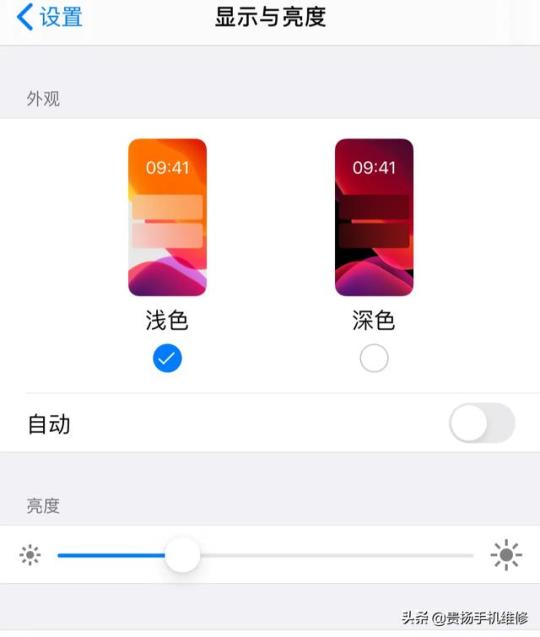
Friends who use OLED screen phones protect their eyes while protecting their eyes! It is also very important to protect the screen of your favorite phone. The precautions are as follows:
1. The software icons we downloaded occasionally change positions! If you don’t change the position, it will take a long time. The phone screen will have an icon shape similar to a watermark! The icon keeps burning in the same position for a long time!
2、Don’t change the wallpaper too bright occasionally! The reason is similar to the icon!
3、It’s best to stick a screen protector too! Prevent physical damage! Because the cost of replacing an OLED screen is very high!
Too low brightness can easily cause eye discomfort. Mobile OLED screens can improve eye comfort by turning on the eye protection mode, adjusting the color of the screen, and increasing the brightness of the screen a little bit.
0 notes
Text
Who is more popular with consumers? The Notch screen or the water drop screen?
Now all mobile phone manufacturers are focusing on the higher screen ratio of mobile phones. Many domestic brands have begun to use the design of notch screens, but gradually, domestic brands have found better water drop screens than notch screens to use. So today KTBABA is here to show you how far is the gap between the waterdrop screen and notch screen? After reading these advantages and disadvantages, you will know how to choose!
KTBABA wants to tell everyone that the water drop screen and the notch screen are not screen material, but a screen shape. The screen shape of the notch screen is like the girls’ bangs, so we named it a notch screen. The waterdrop screen has a screen like a water drop on the screen, so this design is called the waterdrop screen.
Let’s first talk about the advantages and disadvantages of notch screens. The advantage is that there are more parts that the notch screen can inlay. For example, the camera, face recognition sensor and other parts in the Apple mobile phone need such a large space to store it. The functionality is also relatively strong. However, the disadvantage is that it is not very beautiful. When a notch screen came out from the Apple mobile phone, it was complained about by users. Although the functionality is indeed strong, it is really ugly in terms of aesthetics, and it affects our visual experience. For example, when watching a video, the field of view is completely obscured, especially The biggest impact is when playing games, and the vision is not so broad. Therefore, many mobile phone manufacturers have abandoned such design schemes.
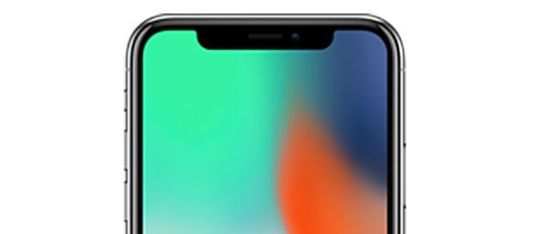
Let's talk about the advantages and disadvantages of the water drop screen. The advantage is that it can increase the proportion of the screen and make our visual experience stronger because there are fewer places to block the field of view, and overall it is better than a notch screen. A lot of beauty, some customers think that the water drop screen is much better than the notch screen. But there are also disadvantages. Because the space is relatively small, there are fewer parts that can be installed. Except for the camera and face recognition sensors, everything else has been canceled because the space is indeed too small.
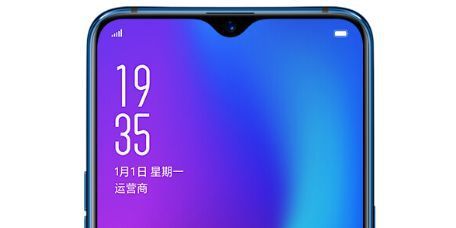
Since the first mobile phone was designed with a waterdrop screen in China, most mobile phone manufacturers have begun to use this design, and it has become a popular screen design solution. It seems that most mobile phone manufacturers still feel that the appearance is relatively good. important.
Both the notch screen and the water drop screen have their advantages and disadvantages, but what cannot be changed is that the design of these two screens will not be the final comprehensive screen design of the mobile phone. Now there are also beginning to appear the digging screen, Waterfall screen, and full-size screen, next time KTBABA will discuss the characteristics of these latter screens.
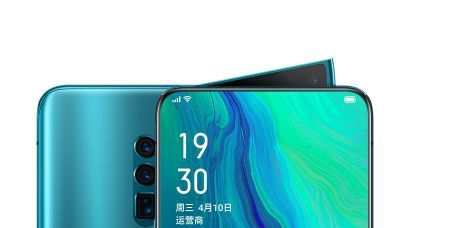
0 notes
Text
Why are mobile phone screen repairs generally expensive?
The mobile phone is an indispensable means of transportation for us now. We have to hold the mobile phone every day and look at the mobile phone all the time. The screen of the mobile phone will inevitably fall on the ground and break. Money, so many people are puzzled. The mobile phone screen is just a piece of glass. Why is it so expensive? Let’s take a look at the inside story of KTBABA with everyone.

KTBABA is a mobile phone LCD screen factory in China. We can tell you professionally that in fact, the mobile phone screen is the most expensive piece of hardware in a mobile phone. It's 2,000 yuan, and this mobile phone screen costs five to six hundred yuan. Other hardware such as chips and motherboards are relatively cheaper.
Why is the cost of a mobile phone screen the highest? It turns out that there is a noun called "screen assembly", which means that the mobile phone screen we see is not just a single layer, but a multilayer laminated. Including glass cover, touch layer, liquid crystal layer, backlight layer, etc., each layer fails, the phenomenon shown by the mobile phone screen is different.
For example, if the screen of our mobile phone is broken, but the touch screen function of the screen can still be used normally, then just replace the outermost layer of glass. The pure glass screen is also cheaper, otherwise, the entire screen will be replaced.
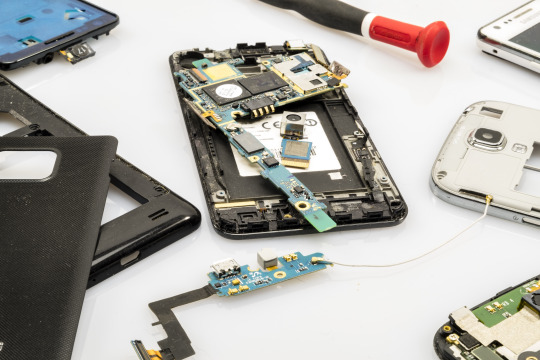
Some people will go online to search for mobile phone screens. The glass screens are only tens of hundreds of pieces, which is still much different from the physical store. So can we replace the screens ourselves? In theory, it is possible, but we all know that ideals are full, and reality is very skinny. If you don't have certain technical advice, don't change it yourself. After all, physical stores rely on technology to eat this bowl of rice. If everyone can repair their mobile phones by themselves, then I don't think they need to survive.
Moreover, once the mobile phone LCD screen is installed, it cannot be returned or exchanged.
Fortunately, many LCD manufacturers now have video explanations or live broadcasts of free-brand LCD screen technology. This allows end consumers to try to buy the best quality mobile phone LCD screens without expensive maintenance. cost. For example,
KTBABA's face live maintenance course: https://www.facebook.com/,
YouTube's dismantling video: youtube.com/channel/UClrEz5Fe4J28Xz50_27DFww

To replace the screen of a mobile phone, you need to design multiple programs, disassemble the phone, separate the screen of the phone, fit the screen, and then install the phone, and many tools are required. These are all costly. In this case, changing a screen is so expensive It's also a matter of course, so for friends who are not too strong in hands-on ability, it is recommended to find a trusted repair shop to replace it.
0 notes
Text
Which material of mobile phone screen is the best?
With the rapid development of the times, smartphones have spread all over the world. However, among all the parts of a smartphone, the one we touch most should be the screen. Sometimes the quality of the screen is the main condition that determines whether we buy or not, so many of our mobile phone friends will take the screen size as the first choice when buying a mobile phone. But only care about the size or resolution of the mobile phone screen, and don't care about the quality of the screen material, this is a big misunderstanding when buying. You should know that the quality of a mobile phone's screen is related to many factors, such as screen material and bonding technology.

The material types of the mobile phone screen include LCD, TFT, IPS, OLED, and AMOLED.
However, which material of mobile phone is better? Let KTBABA tell you how to distinguish mobile phone screen materials: LCD, TFT, IPS, OLED, AMOLED.
The full name of LCD is liquid crystal display, which is the most widely used mobile phone screen material. It is characterized by low price and widespread use. It needs backlight support when displaying.
In the main screen material of the mobile phone parameter table, some letter combinations such as TFT, IPS, SLCD, UFB, SNT, NOVA, etc. are often seen. They do not represent different screen materials, but different display technologies of LCD. The most common LCD technologies in mobile phone screens mainly include TFT, IPS, SLCD, and other screen materials:

LCD Display
The LCD screen is composed of a backlight, a lower polarizing plate, a driving layer, a liquid crystal layer, a color filter, and an upper polarizing plate. Among them, the driving layer is composed of thin-film transistors (TFT), so the term TFT-LCD is often seen.
TFT Display
TFT (Thin Film Transistor) is a thin-film field-effect transistor, which is a type of active-matrix liquid crystal display.
The TFT liquid crystal display is characterized by good brightness, high contrast, strong layering, and bright colors, but it also has the disadvantages of relative power consumption and high cost.

For example, the famous JDI screen is a TFT-LCD display, which uses LTPS low-temperature polysilicon technology screen. Compared with traditional LCD screens, JDI screens are thinner and more transparent.
Many representative models are using JDI screens, such as Huawei mate10 and Nubia Red Devils gaming phone.
IPS Display
IPS, commonly known as "Super TFT", is a technology upgraded from TFT. The essence is still a TFT screen, but a TFT screen using IPS technology. Compared with the ordinary TFT screen, it has the advantages of a large viewing angle, accurate color reproduction, no watermark on the touch, environmental protection, and power saving.

The representative model is the iPhone. For a long time, the iPhone has used an IPS screen. The best quality IPS screen is basically bought by Apple every year. Compared with Android phones of the same price, the iPhone uses an IPS screen, even if the resolution is lower. , The look and feel of the screen can still be maintained to the top level. But starting with iPhone X, Apple mobile phones have begun to use AMOLED screens.

The representative model is the iPhone. For a long time, the iPhone has used an IPS screen. The best quality IPS screen is bought by Apple every year. Compared with Android phones of the same price, the iPhone uses an IPS screen, even if the resolution is lower. , The look and feel of the screen can still be maintained to the top level. But starting with iPhone X, Apple mobile phones have begun to use AMOLED screens.
SLCD Display
SLCD is a special LCD screen for splicing. It is a high-end and advanced variety of LCDs. It is characterized by warmer colors, realism, is more natural, and is suitable for human eyes.

At present, HTC mobile phones use the most SLCD screens.
OLED
OLED (Organic Light-Emitting Diode) refers to organic light-emitting diodes. OLED does not require backlight support, has self-luminescence, and has the advantages of wide viewing angle, high contrast, low power consumption, high response rate, full color, and simple manufacturing process.
According to the driving method, OLED can be divided into passive OLED (PMOLED) and active OLED (AMOLED).
AMOLED screen
AMOLED screens have the characteristics of bendable, wide color gamut, display colors are more vivid, and have the advantages of self-luminous and low power consumption, and have become a hot choice for mainstream high-end mobile phones.
In the field of AMOLED displays, Samsung and LG can be said to dominate the world, with a market share of more than 90%, so the best AMOLED screen phones are of course Samsung’s latest flagship phones, such as Samsung Note9, S9, Xiaomi 8, OPPO Find X, Vivo Nex, Meizu 16, Apple iPhone X, etc.

According to the driving method, OLED can be divided into passive OLED (PMOLED) and active OLED (AMOLED).
In short, if you want to choose a good screen, look for AMOLED and IPS screens, especially AMOLED. Most high-end flagship phones use AMOLED screens.
In addition to paying attention to the screen material and resolution, we also need to care about the screen's full bonding technology and packaging technology, and other parameters.
KTBABA will share with you the fitting technology of the mobile phone screen next time.
0 notes
Text
What are the advantages of various brands of foldable screens?
What are the advantages of various brands of foldable screens? KTBABA will continue to discuss it.
In the past two years, foldable screen phones have been released one after another. They may be different in form and their respective focuses are also different, but there is one thing in common: they all believe that the next form of smartphones should indeed be in the world of foldable screen mobile phones.
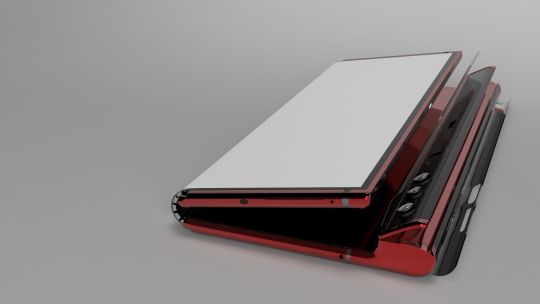
Take the foldable screen mobile phone launched by Rouyu as an example. Its foldable shape is slightly "crude"-directly "bending" a large screen. The folded shape looks a bit rough, and its practicality is relatively poor.
As major international manufacturer of Samsung mobile phones, there are currently two types of foldable screen mobile phones launched. One is the Galaxy Z Fold series with an "inward fold" design. The latter effect is also flawed, but it also currently has more mobile phone brands with foldable screen technology.
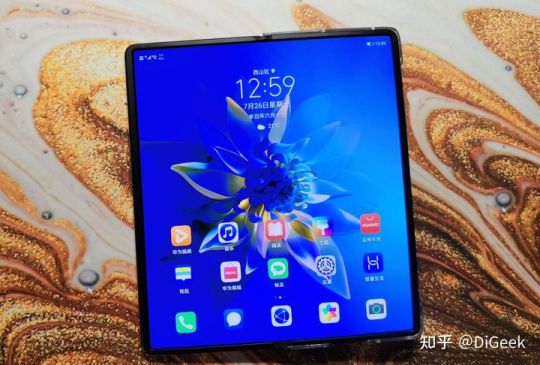
Samsung's second foldable-screen phone is a similar retro "flip phone"foldable design machine: Galaxy Z Flip. After the release of this machine, many users are concerned about not only the hinge problem but also whether the screen crease is the same as the Galaxy Fold. The same is obvious, but even if Samsung uses flexible glass this time, the creases on the hinge part are still obvious.
So far, Huawei has also launched several generations of foldable screen mobile phones designed with external foldable schemes-Huawei Mate X series. After foldable, it is almost the same as ordinary candy bar phones. After unfoldable, the screen can reach the size of the smallest tablet computer, supplemented by more mature Cross-terminal, multi-screen collaborative program design, and top-level hardware collocation。

Patent information of "Foldable Electronic Equipment and foldable Screen Installation Structure" by Huawei Technologies Co., Ltd. was published. The patent publication number is CN112466205A, and the application date is September 2019. Huawei uses this technology to "eliminate fold marks"
The patent abstract shows that the application provides a foldable electronic device and a foldable screen installation structure. The foldable electronic device includes a housing and a middle frame. The screen is flexible and bendable, and the foldable screen includes a flexible cover and a flexible display module, and the flexible display module performs display through the flexible cover.
Through this patent, Huawei can greatly reduce the damage of the current foldable screen, which can greatly reduce the deformation and protrusion caused by the repeated bending of the screen, and further enhance the practicality of the foldable screen. I look forward to seeing this on the Mate X3. The application of this technology.

Some analysts predict that Apple may launch an iPhone smartphone with an 8-inch OLED flexible screen in 2023. On Tuesday, the United States Patent and Trademark Office (USPTO) revealed the company's patent for an "electronic device with a sliding expandable display."
As can be seen from the patent illustration, Apple has proposed a unique flexible screen design, suggesting that this conceptual device can roll up the screen and store it in shell-like a scroll.
The shell part contains slidable elements, and with the stretching of the body components, the flexible screen in a curled state can also be pulled out.
In the compact (storage) state, the device can light up a small part of the screen as needed. In addition, to ensure the flatness of the screen, there is a spring inside to exert a certain amount of force.
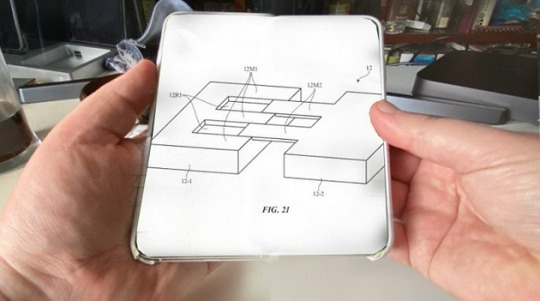
At present, the form of foldable is still being explored. Each mobile phone manufacturer is developing different types of foldable phones. Perhaps some users will recognize this type of smartphone, but its high pricing and expensive post-maintenance costs are all doomed. It is not a product form that can be affordable by the more general public and is more practical. KTBABA will look forward to the foldable screen with everyone, this product is expected to change the world again, and hope that in the future KTBAB can develop products that are more suitable for consumers.
0 notes
Text
Two of the largest mobile phone screen glass panel manufacturers in China
In the last time, we explained how folding screens can bend and stretch. KTBABA will come to science on the main carrier of mobile phone screens' glass panel manufacturers in this time.
The glass panel refers to the lens covering the display screen and the touch screen, which mainly protects the display screen and the touch screen.

Regardless of the touch technology, the cover plate is an indispensable protective device, and the glass cover plate has gradually become the mainstream of the cover plate due to its high light transmittance and strong scratch resistance. In recent years, thanks to the vigorous development of the touch-sensitive mobile terminal market, the market demand for glass cover substrates has continued to maintain high growth.Meanwhile, with the rapid development of smartphones, a small mobile phone glass screen has given birth to many powerful screen glass panel manufacturers in China, which are well-known all over the world.
The following are the most powerful Technology manufacturer in China:
1: Lens Technology
Headquarters: Changsha
Main product: glass panel
Official website: http://www.hnlens.com/

The company’s main products include window protective glass, touch screen monomers, touch screen modules, camera modules, fingerprint modules, cameras, buttons, ceramics, metal accessories, etc. The products are widely used in mobile phones, tablets, laptops, TVs, Digital cameras, players, GPS navigators, car meters, smart homes, medical equipment, etc.
When it comes to glass panels, people generally think of Corning’s Gorilla Glass or Japan’s Asahi Glass, but they just do the raw materrial of glass.
To manufacture the glass panels of iPhones, Chinese manufacturers need to purchase glass substrates and polish them to a thickness of about 1 mm through CNC. Our common 2.5D glass and 3D glass are all polished in this way. After polishing, it is tempered and coated to become the glass cover on the surface of the mobile phone. And for Apple, the control of the product can be said to be very strict. In the iPhone4, the allowable tolerance for the length of the white glass cover’s difference can be 0.02mm, and the allowable tolerance for thickness’differrence is 0.05mm, and the light transmittance is 93% to 97%. Only one company from China has satisfied this strict requirement.
This company is Lens Technology. Currently, Lens Technology is one of the few domestic companies that produce high glass panels. Part of the glass panel on the iPhone use by Lens Technology products. With the company's listing in 2015, Lens Technology gradually became known, otherwise, he is still quietly working in Hunan.
2. Biel Optics
Headquarters: Guangdong
Main product: mobile phone screen glass

However, Lens Technology is not the only manufacturer that provides glass panel for Apple iPhones. As an established screen glass panel manufacturer, Biel Optics began making glass panel for various products in the 1980s. As the era of smartphones is approaching, Biel Optics has begun to transform to produce glass panel for major mobile phone manufacturers, among which well-known customers include Apple, Samsung, Motorola, etc. It is reported that half of every ten mobile phone glass screens in the global market are produced by Biel Optics. At present, Biel Optics accounts for 70% of Samsung’s mobile phone screens and about 60% of Apple’s mobile phone screens. In addition to domestic brands, like Huawei, Xiaomi, Vivo, Meizu, and other mobile phone screens are also mainly provided by Biel Optics.
The number one in the world is China's Biel Optics. This is a Hong Kong-owned private company. Its main factory is in Huiyang County, Huizhou City. However, it is simply the most mysterious mobile phone supply chain giant in China. So far, it does not even have an official website, nor has it ever been. Publish operating data. But, the company has become one of the computer and mobile phone glass lens manufacturers with the largest production scale, the strongest production capacity, and the most advanced production technology and equipment in the world.
In addition to these two powerful companies, China has other well-known mobile phone glass screen companies. KTBABA will tell you more about it next time.
0 notes
Text
Why the foldable screen can bend and stretch?
Why the foldable screen can bend and stretch? Let KTBABA tell you.
In the evolution of smart phones, from narrow bezels to curved screens and today's full-screen display, people never stopped to chase for a larger display area.
Except the LCD notch screen and the water drop screen , there are still sliding covers, mechanical structures and other methods to create a full-screen display effect. The hole-digging screen is also on the way to the market. Even through these structure’s screens can reach 100% full-screen display, but due to the volume of the mobile phone, The size of the screen is limited in 7 inches, so how to break through this limit?
Yes, it is time to use a foldable screen to achieve the effect of widening the screen.
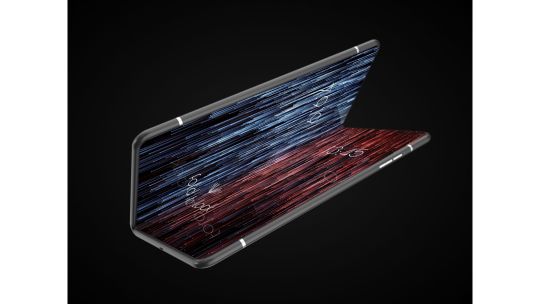
How is the folding screen made? KTBABA also makes research on emerging technologies and plans for the future lcd market.
The biggest feature of curved OLED screens is that they can be bent, but whether it is a curved TV or a curved screen mobile phone, the curved screen is not bent at a large angle.
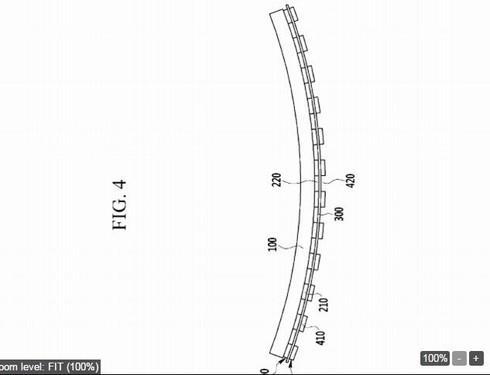

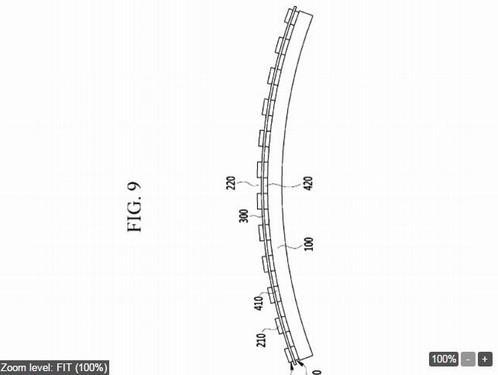
If the bending angle can reach 180°, what will happen?
Therefore, what we call a folding screen mobile phone requires that the screen of the mobile phone be bent enough to be 180 degrees so that it can be stacked together, and it must be able to be closed and opened at will. The folding screen can be regarded as an upgraded version of the curved OLED screen. Through the bendable display area, the mobile phone can be closed and opened at will, which not only controls the volume of the mobile phone, but also obtains a larger display area.
However, it is not easy to make a foldable screen. Thing to be clear here is that the screen we see is not a simple unit At this stage, OLEDs are mainly composed of a substrate, an anode, a conductive layer, a light-emitting layer, and a cathode.
OLEDs are stacked into several ultra-thin layers on a glass or plastic substrate, with multiple layers of organic compounds sandwiched between two electrodes (cathode and anode). When voltage is applied to the electrode, electrons from the cathode and holes (positive charges) from the anode attract each other and meet in the light-emitting layer. When electrons and positive holes recombine, the OLED emits light, releasing energy in the form of photons.

To put it simply, it means that the components and structure of the screen can be folded. The previous screen design is definitely not good, especially the glass that cannot be bent at will as the screen substrate, so we need to use plastic material.
The characteristics of plastic make it the most suitable substrate material for foldable screens. It not only enables the substrate to be folded, but also improves the drop resistance of the screen, and at the same time makes the screen lighter and thinner. The lightness and thinness of the plastic material is also the advantage of the folding OLED screen. The 1.2g~1.4g/cm2. Compared with the glass material, the weight of the mobile phone is greatly reduced.
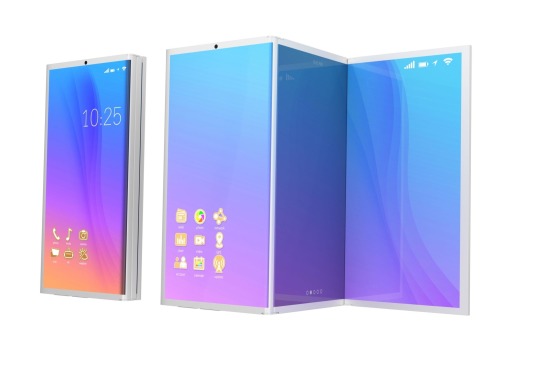
However, there are still worrying factors of the folding screen. High-frequency folding is bound to put more severe requirements on the life of the hinge. In addition, whether the hinge design can fit the two screens together is also of concern to consumers. In the next time , KTBABA will have an in-depth understanding of the development trend of folding screens of various brands in the market.
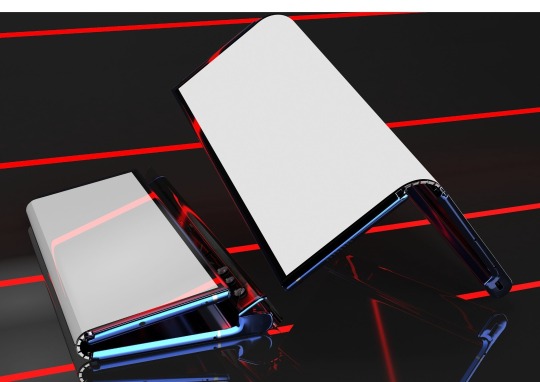
0 notes
Text
What is the difference between LCD and OLED
When you see a phone, tablet, or TV these days, it's probably either using an LCD or an OLED display. These two display technologies have been developing over the years, and they now exist in every corner of our everyday lives. There are a lot of differences between LCD and OLED technology, but what are these? Here is a dive into the science behind these two technologies and what makes them different from one another.

LCD stands for "Liquid Crystal Display". The basic science behind LCD technology can be complicated because different types exist. To keep things simple, this article will only discuss the science behind the most basic and straightforward type of LCD: the calculator LCD.
To begin with, external light enters the display and hits the vertical polarization filter. Though the polarized light passes through the first electrode unparsed, it gets twisted 90 degrees after hitting the liquid crystal. Now, it can pass through the horizontal filter. The light hits the reflective panel and then bounces back through the layers and to the viewers' eyes.

When a current is introduced to the liquid crystal, the process is interrupted. The vertically-polarized light passes through the liquid crystal unchanged. This means that it gets blocked when it hits the horizontal polarization filter. This results in a black spot. That black spot would be the numbers you then see on the screen.
Smartphone and TV displays are a bit different, but ultimately, they share the same concepts. There is a flat panel that's set up behind the layers that provide light. It gets polarized as it travels through the layers and eventually hits the red, green, and blue sub-pixels. This is how the light gets its color before it hits the viewers' eyes.
OLED stands for "Organic Light Emitting Diode". One differentiator compared to an LCD is that OLEDs emit their light. LCDs, on the other hand, require a light source—like a backlit panel, LEDs, or ambient light.
The diode is rich in electrons, which makes it negatively charged. The Anode is rich in electron holes (the lack of electrons in atoms), which makes it positively charged. When a voltage is sent between those two layers, the electrons and holes will flow towards one another.
When electrons and holes meet, they cancel each other out, releasing energy in the form of photons (light). The higher the voltage, the more photons that are produced, and thus, the brighter the light. The emitted light then gains its color by passing through the red, blue, and green color filters of the sub-pixels.

As an LCD factory with 16 years' LCD manufacturing, KTBABA has abundant experience in both LCD and OLED screen production. To provide top-quality LCD and OLED screens to its customers, KTBABA has a strict quality control system. The strict quality control system includes the test for each piece of the LCD twice, just to make sure to send the good condition products to its customers.
#led#mi oled tv 2021 price#oled#mobilephoneindiamobilephonewholesalemobilephonerepaircoursesmobilephongtelecom#ktbabalcd#kebabascreen
0 notes
Text
Basic working principle of LCD screen
[Science] Basic working principle of LCD screen
The purpose of writing such an article is disenchantment. "Disenchantment" is a philosophical word. The dissolution of the mystery, sanctity, and charm of science and knowledge are the ones that I want to express. Today's marketing sanctifies technical terms, and the work of researchers is tainted by hype. In my opinion, it is important to understand the principles, advantages, and disadvantages of new technologies, and then say "That's interesting." Instead of "Awesome! Dumbfounded! Surprised! Boiling! Subversion!
So I want to use plain language to analyze some of the hotter technologies and concepts on the Internet. To put it bluntly, I want to resist bad smell marketing. As I am just a half-bottle water lover, this is difficult. But most of the things are based on current information, but the stench of marketing is pervasive and deeply rooted in the hearts of the people. There will inevitably be errors in the current learning and selling at current, and criticisms and corrections are welcome.
Three primary colors, pixels, sub-pixels
In the quality education stage, we learned the knowledge of the three primary colors, and then we took a look at how to display various colors on the screen.

The concept of screen pixel (pixel) should not need to be explained. A pixel is a display point, and several pixels in the horizontal and vertical directions are arranged to form a screen. When different pixels present different colors, an image appears on the entire screen.
But how does a specific pixel display different colors? Of course, it is still a mixture of RGB's three primary colors. A pixel contains three tiny color blocks of red, green, and blue, and this color block can be called a sub-pixel.

Each of the three sub-pixels participates in different amounts of the LCD screen, and the colors presented by the pixels are different. How to adjust the amount of participation of sub-pixels during display? Now we officially begin to understand the principle of an LCD screen display.
How does the LCD screen work?
The LCD screen needs a backlight, which is white light, and the white light penetrates the colored film to display colors.

But the screen display content will change, that is, the backlight needs to be adjusted, which is achieved through the liquid-crystal layer. Before that, we first add two polarizers to the screen, one vertical and one horizontal. When the backlight passes through the first polarizer, only part of the light corresponding to the polarization direction of the polarizer can pass, but because the direction is perpendicular to the second polarizer, it cannot pass through, and the screen is black.

Then use the liquid crystal to adjust the direction of the polarized light after the first polarizer, as a result, it can pass through the second polarizer.
About the liquid crystal, it has unique optical properties. The light can go along the crystal with the direction for the diffuse, the liquid crystal will distort the orientation of polarized light. With the correct operation, the polarized light after passing through the first polarizer can be rotated to make it pass through the second polarizer.

But what is showed on the screen at this time is still white, how to adjust it to other colors? Liquid crystals also have a unique electromagnetic property. Liquid crystal molecules in an electrostatic field will induce induced charges and generate electrostatic torsion, which changes the arrangement of the liquid crystal molecules. The permutation direction of the liquid crystal molecules is changed by the electrostatic field, and the direction of rotation of the passing light naturally changes. Therefore, it is also necessary to add a pair of electrode plates on both sides of the liquid crystal layer, and adjust the voltage between the electrode plates to control the degree of distortion of the liquid crystal molecule arrangement, thereby controlling the amount of light passing through the second polarizer, and finally showing a variety of Kind of color.

Well, the above is the general working principle of the LCD screen. Here is a more detailed diagram copied from Wikipedia.

Thanks for your time to read it,and I hope you can come to discuss with me.I will share more in the following days as well.
0 notes
Text
What are the differences between different lcd screens?
What are the differences between different screens?
When you see a phone, tablet, or TV these days, it's probably either using an LCD or an OLED display. These two display technologies have been developing over the years, and they now exist in every corner of our everyday lives. There are a lot of differences between LCD and OLED technology, but what are these? Here is a dive into the science behind these two technologies and what makes them different from one another.
LCD stands for "Liquid Crystal Display". The basic science behind LCD technology can be complicated because different types exist. To keep things simple, this article will only discuss the science behind the most basic and straightforward type of LCD screen: the calculator LCD.
To begin with, external light enters the display and hits the vertical polarization filter. Though the polarized light passes through the first electrode unparsed, it gets twisted 90 degrees after hitting the liquid crystal. Now, it can pass through the horizontal filter. The light hits the reflective panel and then bounces back through the layers and to the viewers' eyes.
When a current is introduced to the liquid crystal, the process is interrupted. The vertically-polarized light passes through the liquid crystal unchanged. This means that it gets blocked when it hits the horizontal polarization filter. This results in a black spot. That black spot would be the numbers you then see on the lcd screen.
Smartphone and TV displays are a bit different, but ultimately, they share the same concepts. There is a flat panel that's set up behind the layers that provide light. It gets polarized as it travels through the layers and eventually hits the red, green, and blue sub-pixels. This is how the light gets its color before it hits the viewers' eyes.
OLED stands for "Organic Light Emitting Diode". One differentiator compared to an LCD is that OLEDs emit their light. LCDs, on the other hand, require a light source—like a backlit panel, LEDs, or ambient light.
The diode is rich in electrons, which makes it negatively charged. The Anode is rich in electron holes (the lack of electrons in atoms), which makes it positively charged. When a voltage is sent between those two layers, the electrons and holes will flow towards one another.
When electrons and holes meet, they cancel each other out, releasing energy in the form of photons (light). The higher the voltage, the more photons that are produced, and thus, the brighter the light. The emitted light then gains its color by passing through the red, blue, and green color filters of the sub-pixels.
As an LCD factory with 16 years' LCD manufacturing, KTBABA has abundant experience in both LCD and OLED screen production. To provide top-quality LCD and OLED screens to its customers, KTBABA has a strict quality control system. The strict quality control system includes the test for each piece of the LCD twice, just to make sure to send the good condition products to its customers.
#lcdscreen#mobilephonelcd#ktbaba#ktbabalcdscreen#2021LCD#2021LCDmarket#
1 view
0 notes
Text
M710 Mobile Phone LCD Tester
In addition to specializing in the production of mobile phone LCD, what else should KTBABA be proud of? In fact, we will provide more convenient after-sales and pre-sales test products for our maintenance points and wholesale buyers-----M710 intelligent Universal LCM Tester.
The factory itself has also made many improvements in product performance. So, what kind of mobile testing equipment should we choose? It depends on what features the customer needs to choose.
Today, let's introduce this kind of testing instrument.
It can test an LCD touch screen with a motherboard, this tester runs a picture and then runs different colors which shows if the LCD has any defects. It can test the LCD screen has damage or not, the best testing tool for the people who refurbish phones & LCDs.
Motherboard, automatic identification board, which is used to identify the model of IC panel. It is equipped with two flat cables, a long one and a short one. It is determined whether to use the long or short one according to the length of the flat line of the LCD screen. If the LCD cable is long, use the short cable. If the LCD cable is short, use the long cable.
There are a power interface and power switch on the left side of the fuselage. The third port is a TF card interface, which is used to upgrade the machine program. When there is a new program, you can insert the card reading upgrade program.
It can test an LCD touch screen with a motherboard, this tester runs a picture and then runs different colors which shows if the LCD has any defects.
There are also some functions on the right side of the tester. The first key above is the one key recognition function. Just press this key, the model of the IC panel will appear on the screen on the front of the fuselage. At this time, select the corresponding program according to the configuration of LCD glass IC, and use the up and down function keys to confirm the corresponding code. The second key on the right side of the fuselage is the manual and automatic switching key. The third key is the switching key of LCD and TP, which can switch the functions of LCD and touch.
During the test, if the full screen can be touched, it means that the touch function of the screen is intact.
After all, tests are completed, you will see a bright line box on all sides of the LCD screen. If the bright line is just aligned with the frame of the LCD display, it means that there is no offset when the screen fits.
The latest m710 test box can be tested directly on the small board without adjusting the code. The code will be automatically generated by pressing a key, which saves a lot of time compared with the previous box.
According to the IC panel deducted, the tester will directly come up with the corresponding model of the program. If you turn the page, you will enter an automatic mode or switch to manual mode. If you want to test the touch, you can switch to manual TD mode. Compared with the previous machine, at least 80% of the time is saved now.
It takes a lot of time to adjust the version and code before. This new test box saves at least 80% of the time compared with the previous machine. And the configuration is applicable to many new models.
This factory testing unit for the performance and quality of LED screens is a must. Easy to use, simply use the desired adapter with the unit and test screens in seconds. It will test display, touch.
WHO NEEDS IT? - Suitable for repair store, parts distributor, refurbishing facility, second-hand dealer, etc. One machine can support test more about 1300+ model displays, it can test the LCD screen has damage or not in a short time.
KTBABA will respond to the needs of the market for the first time, innovate continuously, and produce diversified products to meet the needs of customers. Please pay attention to us:
WWW.KTBABA.COM
0 notes
Text
The ways for reaching KTBABA
As a cross-border international trading company, with the international economic situation, cross-border e-commerce platforms have also become the core trading channels of most trading companies. Since the arrival of Covid-19 in 2020, to prevent its spread and residents’ safety, most countries have chosen to close the country. This also caused an irreversible blow to the original trading entity stores and production factories.
KTBABA, as a strong offline entity international trader and mobile phone LCD manufacturer with many years of experience, to provide better trade services, KTBABA also after the arrival of Covid-19, to be able to stably provide products to customers and develop The new customer group will open up multiple cross-border international trade platforms in 2020 along with the social situation.
After a long period of data collection by KTBABA's professional marketing team and combining with KTBABA's current situation, KTBABA finally developed two cross-border trade platforms, Alibaba and Made In China, as the main body of online trade, and combined with multiple social media. The promotion of the brand's publicity expands the popularity of the KTBABA brand so that the brand can be popularized in more places.
Why did KTBABA choose Alibaba?
Firstly, Alibaba is a well-recognized name in China's e-commerce space. It is one of the three companies that have shaped the Chinese Internet economy, observes Fortune's Ken Hao - China's mix of Amazon.com, eBay, and PayPal adds Wall Street's Juro Osawa.
Moreover, the first advantage is the location--China. With 560 million Internet users spending 20 hours a week online, China is by far the largest Internet market in the world--twice the size of the US market. And notably, China is skipping traditional retailing in favor of e-tailing.
"Just as China jumped straight to wireless communications, China may skip a generation of brick-and-mortar retail build-out through aggressive e-commerce adoption," writes Ken Hao. This generates great growth opportunities for Internet retailers, especially for early movers like Alibaba.
From this point of view, Alibaba has integrated the advantages of multiple international superior platforms to make diversified improvements and can bring multi-dimensional customer levels to suppliers. In addition, it can also give companies a certain degree of credibility. To a large extent, Alibaba has become an important business card for suppliers in China. Therefore, KTBABA chose the highly authoritative Alibaba to provide customers with higher quality services.
On Alibaba, we can perfectly display the appearance, color, and details of the product in the form of pictures for foreign buyers who have not been in China, and can directly and tell customers the parameters of the product. Let customers have a clear understanding of KTBABA products. It also allows customers to judge whether the product is the product they are looking for and demand in a short time. In addition, it also allows customers to freely choose logistics methods on the Alibaba platform. Get more convenient goods.
In just 5 months, KTBABA has served 1500+ customers from various countries in the world on Alibaba. And it has also been affirmed and praised by new and old customers.
The Alibaba website of KTBABA : https://ktbaba.en.alibaba.com/
0 notes
Text
How does KTBABA's packaging ensure that the mobile phone LCD screen will not be damaged?
Mobile phone LCD is a fragile good and easy to damage. Many foreign customers received the goods, which are all wrapped in a lot of toilet paper, then pack them in a large number of foam bags. That is safety and it will not be broken, but the volume becomes very large, also not convenient for the customs to conduct random inspections ,after the spot check, it was hastily wrapped back, resulting in product damage.
Usually, buyers pay great attention to the packaging of the products because packing has a close bearing on sales. The mobile phone LCD is very fragile, the packing must be strong enough to withstand rough handling.
KTBABA has always realized that in addition to product quality, the packaging is also one of the important factors affecting product reputation. So, each piece LCD of KTBABA after being tested will be put into the bubble bags one by one, each packing box contains ten screens. Of course, if the customer has special requirements after each LCD is loaded into the bubble bag, it can be loaded into a packaging carton independently. We can satisfy our customers
About the packing, the LCD must be well protected against dampness, moisture, rust, and shock. All packaged LCD cartons, every 20 boxes should be packed in a foam box, each foam box is lined with a Sponge to protect the goods against the press. The case that we used was a substantial one, with sufficient packing used. Last that the foam boxes be packed in a woven bag with tape.
Generally, other brands have hooks on the top of the cartons for hanging displays. KTBABA’s cartons are designed to be full of humanization here is a hidden hole in the box body of each independent LCD box of ktbaba, This design makes full use of the space in the box when packing So that the carton can be filled with the maximum number of liquid crystals, reduce transportation costs for customers. KTBABA dealers can hang the display by simply breaking them off and pulling out the holes after receiving them. KTBABA has considered these details for customers.
Many customers think they have to pay a high price for these safe packaging. These expenses have been included in the contract price. Think about it. If the product is damaged when the customer receives it due to poor packaging, KTBABA must provide after-sales service for customers, replace or repair damaged parts for customers, which may affect customers' sales. Due to the Convid-19, the shipment has become very inconvenient, which makes the after-sales service very troublesome, and the after-sales shipping cost is very expensive. Therefore, KTBABA is constantly updating and improving its packaging to minimize the repair rate and achieve a win-win effect.
Due to our control over details, our overseas customers are increasing every year, If you are an overseas wholesaler and pay great attention to after-sales issues, you can try to learn about KTBABA. Our official website and social media have very detailed information. Welcome to visit:
Official website: www.ktbaba.com
FACEBOOK: www.facebook.com/KTBABAMOBILE
0 notes
Text
How does KTBABA's packaging ensure that the mobile phone LCD screen will not be damaged?
Mobile phone LCD is a fragile good and easy to damage. Many foreign customers received the goods, which are all wrapped in a lot of toilet paper, then pack them in a large number of foam bags. That is safety and it will not be broken, but the volume becomes very large, also not convenient for the customs to conduct random inspections ,after the spot check, it was hastily wrapped back, resulting in product damage.
Usually, buyers pay great attention to the packaging of the products because packing has a close bearing on sales. The mobile phone LCD is very fragile, the packing must be strong enough to withstand rough handling.
KTBABA has always realized that in addition to product quality, the packaging is also one of the important factors affecting product reputation. So, each piece LCD of KTBABA after being tested will be put into the bubble bags one by one, each packing box contains ten screens. Of course, if the customer has special requirements after each LCD is loaded into the bubble bag, it can be loaded into a packaging carton independently. We can satisfy our customers
About the packing, the LCD must be well protected against dampness, moisture, rust, and shock. All packaged LCD cartons, every 20 boxes should be packed in a foam box, each foam box is lined with a Sponge to protect the goods against the press. The case that we used was a substantial one, with sufficient packing used. Last that the foam boxes be packed in a woven bag with tape.
Generally, other brands have hooks on the top of the cartons for hanging displays. KTBABA’s cartons are designed to be full of humanization here is a hidden hole in the box body of each independent LCD box of ktbaba, This design makes full use of the space in the box when packing So that the carton can be filled with the maximum number of liquid crystals, reduce transportation costs for customers. KTBABA dealers can hang the display by simply breaking them off and pulling out the holes after receiving them. KTBABA has considered these details for customers.
Many customers think they have to pay a high price for these safe packaging. These expenses have been included in the contract price. Think about it. If the product is damaged when the customer receives it due to poor packaging, KTBABA must provide after-sales service for customers, replace or repair damaged parts for customers, which may affect customers' sales. Due to the Convid-19, the shipment has become very inconvenient, which makes the after-sales service very troublesome, and the after-sales shipping cost is very expensive. Therefore, KTBABA is constantly updating and improving its packaging to minimize the repair rate and achieve a win-win effect.
Due to our control over details, our overseas customers are increasing every year, If you are an overseas wholesaler and pay great attention to after-sales issues, you can try to learn about KTBABA. Our official website and social media have very detailed information. Welcome to visit:
Official website: www.ktbaba.com
FACEBOOK: www.facebook.com/KTBABAMOBILE
0 notes